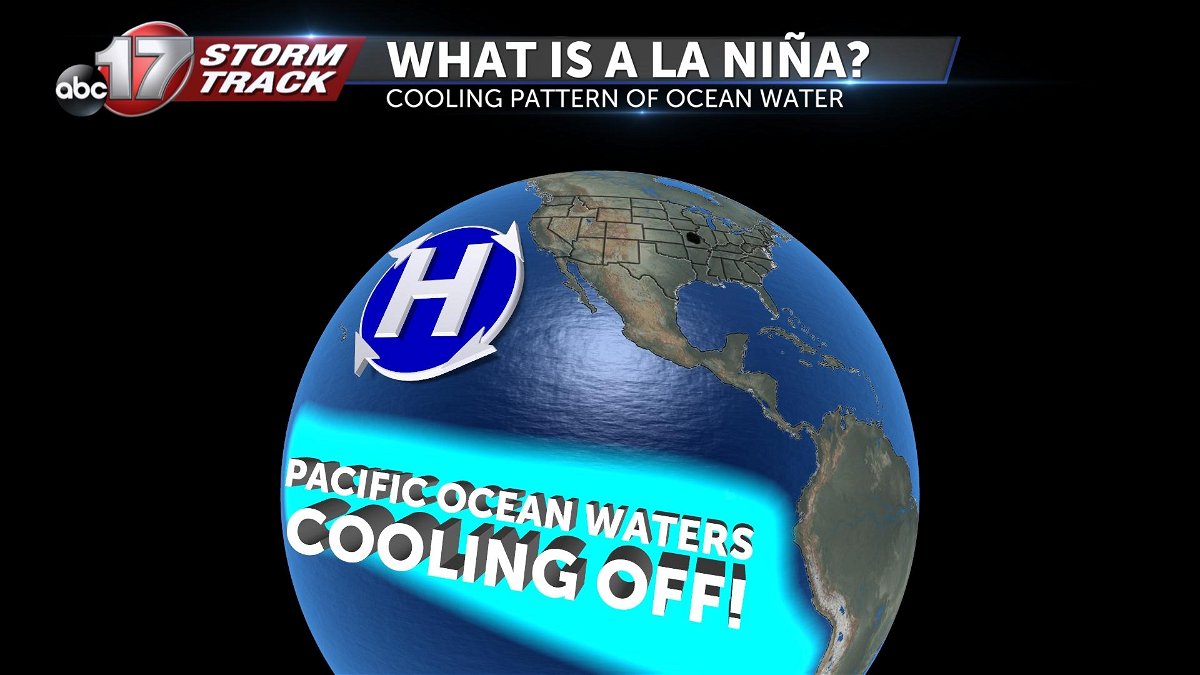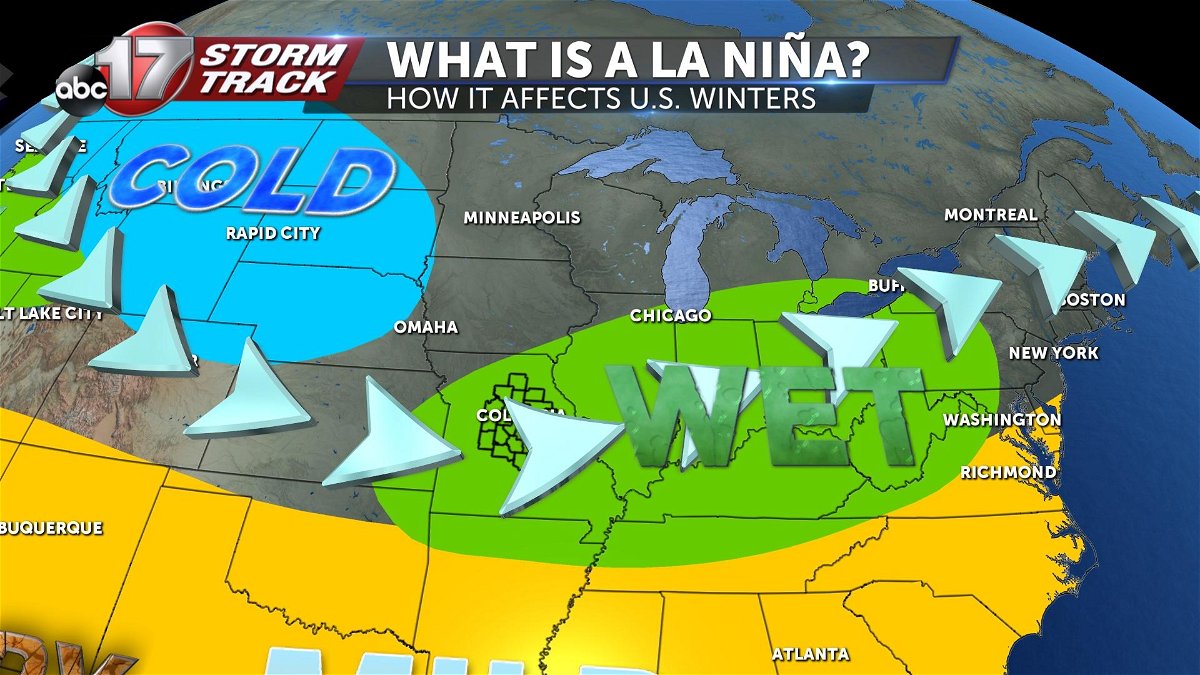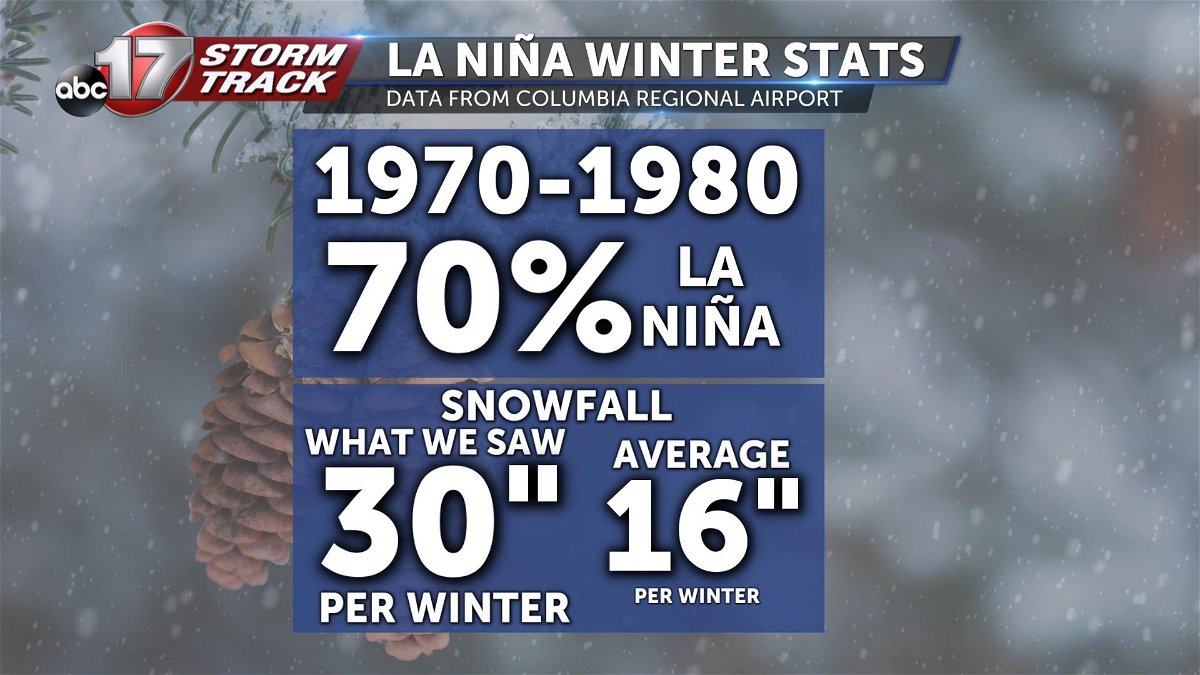La Niña Advisory issued for the upcoming winter: What it means for Mid-Missouri
The Climate Prediction Center issued a La Niña Advisory on Thursday for the upcoming winter after a noticeable trend of cooling waters in the eastern equatorial Pacific Ocean over the past several months.

This trend is expected to continue through our winter this year, with the CPC giving a 75 percent chance for this pattern to continue.
What will it mean for Mid-Missouri?
La Niña's tend to bring a wide variety of weather to the United States. Strong high pressure over the central Pacific will tend to lead to a wavier jet stream pattern over the U.S. That means cold air can more frequently dive out of Canada, and stronger storms can form, leading to wetter than average conditions in the Pacific NW/Midwest/Ohio Valley

A look at La Niña's of the past...
I dug through over 100 years of data and linked a few prominent winter seasons with an established La Niña pattern. The 70's were an incredibly snowy time period across the much of the United States, including mid-Missouri. A look back through the 1970-1980 decade shows that 70% of those winters were influenced by a La Niña weather pattern.
The amount of snow that fell tells quite a story of what this pattern is capable of. In the ten-year period, EACH winter averaged 30" of snow... a typical winter at Columbia Regional Airport is nearly half that.
1978 was our snowiest winter ever recorded, when nearly 55" of snow fell in a single season.

Another powerful winter that may be a bit fresher in our minds is 2011. It came in just shy of 1978... but stands as our second snowiest winter with 53.4".
The winter of 2011 featured a winter storm in early February-- often referred to as "snowpocalypse". The storm shut down I-70 across the state, and closed the MU Campus for three days.

For reference, the winters of 2010-2012 featured one of the strongest La Niña's ever recorded.
-Luke
